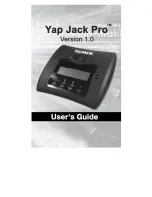
With
analog clocks
the matter is also pretty straight forward: The clock signal consists of a pulse or
square wave that syncs the tempi. Starting and stopping can be solved through various approaches, most of
them include a start/stop gate.All of the previously mentioned standards have been brought together in the
RH301 to provide a usable working environment, no matter what setup you use.
MIDI as the master sync source
Set the master sync source to EXT. and plug the MIDI cable with the clock signal into the DIN/MIDI IN jack
on the back of the pedal. The RH301 internally starts to adjust its tempo to the MIDI tempo as soon as a
clock signal arrives on the input.
A start / stop byte from your DAW or hardware MIDI sequencer is translated into a corresponding byte,
and only the MIDI clock itself is received by the pedal, start / stop gate on the DIN OUT jack. If no start /
stop byte, and only the MIDI clock itself is received by the pedal, the black push button can be used to start
itself and send a start / stop gate at the DIN OUT and to add a start / stop byte at the MIDI OUT jack.
The push button can also be used to sync “off beat”: If you push it while the RH301 is running already the
pedal will reset its internal clock to 0, in sync with the MIDI ticks that are coming via the MIDI cable. This
way you can manually sync the RH301 into shifted clock signals.
DIN Sync as the master sync source
If you want to sync your setup to a DIN Sync source simply plug in the cable and switch the master sync
source to EXT. The usage is similar to having your pedal synced to a MIDI signal. An incoming start / stop
gate is translated into a corresponding start / stop byte on the MIDI OUT connection. If no start / stop gate
is being received by the pedal, you can create your own by pressing the black push button. This will start the
pedal and send a MIDI start / stop byte to the MIDI OUT jack as well as a start / stop gate to the DIN
OUT jack.
The push button can also be used to sync “off beat”: If pushed while the RH301 is running, the pedal will
reset its internal clock to 0, but stays in sync with the DIN sync clock that is coming in via the DIN sync
cable. This way you can manually sync yourself into shifted clock signals.
Analog Clock as the master sync source
Set the master sync source to EXT. and insert a jack with a clock signal into the EXT. CLOCK jack on the
patch bay. The pedal reacts to rising edge clock signals going from 0V to at least 3V. You can use the black
push button to send start / stop bytes (MIDI) and start / stop gates (DIN) on the next rising edge trigger.
The EXT. CLOCK input is a switching type jack that overrides the other sync settings, so whenever you
insert a cable in this input the pedal will only sync to an analog clock / trigger signal on this jack.
RH301 as the master sync source
If you want the RH301 to be the master clock source itself there are two possibilities: You can set the
master clock to FREE and adjust the tempo with the TEMPO knob. By pressing the black push button you
create the start / stop functions. You also have an option to set the master clock to TAP, then using the black
push button to tap a tempo. After the third tap a start byte and gate are being created automatically.
KOMA Elektronik RH301 – Rhythm Workstation / Utility Tool
Page 7























